Zigong Dinosaur Museum
Zigong Dinosaur Museum
Zigong Dinosaur Museum is located in the northeast of Zigong City, Sichuan Province, 11 kilometers from the city center. It is a large site museum built on the world famous "Dashanpu Dinosaur Fossil Group Site". It is another large site museum in China after Banpo Site and Qinshihuang Terracotta Warriors and Horses Pit. It is also the first professional Dinosaur Museum in China and one of the three major dinosaur sites museums in the world. The Museum covers an area of more than 66,000 square meters. Its fossil specimens cover almost all known species of dinosaurs in the Jurassic period from 201 to 145 million years ago. It is one of the largest collections and exhibitions of Jurassic dinosaur fossils in the world. It has been appraised as "the best Dinosaur Museum in the world" by National Geographic magazine.
Basic introduction
The Earth is the only celestial body known to exist in the solar system. It has gone through nearly 4.6 billion years. Long before the birth of man, in the Mesozoic era of Earth's history (252-666 million years ago), reptiles dominated the planet for a time. Among them, the most representative is "dinosaurs". Therefore, the Mesozoic era in Earth's history is called the "dinosaur era".
Zigong, Sichuan Province, is not only a famous salt capital for thousands of years, but also an important source of dinosaur fossils in China. The terrestrial strata of Jurassic (201-145 million years ago) are well developed in this area. Dinosaur fossils are buried in the early, middle and late Jurassic terrestrial strata, and this period of dinosaur fossils is the weak link in the world's dinosaur research. Therefore, the dinosaur fossils in Zigong provide a wealth of key raw materials for the world's study of dinosaur evolution.
Summary
According to geological survey, during the Jurassic period, Zigong was an open lakeside area with hot climate, lush water and grass, and tall trees. It was an ideal place for dinosaurs to live. The mountain pavement was a quiet sandy beach, where the dead and the bodies of dinosaurs transported by rivers from afar were buried by the sand on the beach. The accumulation of corpses and the burial of sediment alternated for a long time, and after a long backlog of 1.2 billion years, the fossil-bearing sandstone layer seen today was finally formed.
Dinosaurs Grottoes
The famous Dashanpu dinosaur fossil site in Zigong City is located 11 kilometers northeast of the center of Zigong City. The Dashanpu dinosaur fossil site was discovered in 1972. A large number of precious dinosaur fossils have been unearthed one after another, and it has become a rare fossil treasure house. After investigation, the fossil enrichment area of Dashanpu dinosaur fossil site is 17,000 square meters, which is divided into 3 to 4 small layers. Nearly 100 individual dinosaur fossils and more than 30 complete skeletons have been excavated within only two 800 square meters. Its dinosaur fauna includes 3 classes, 11 orders, 15 families and nearly 20 species, and a number of precious fossils of associated animals have been unearthed. Among these fossils, quite a few are new genera and species. They are the second longest dragon in Asia, the vegetative sauropod dinosaur, the fierce carnivorous dinosaur, the short bird-footed dinosaur and the extremely precious primitive stegosaur. They are rare in the strata of the same geological age at home and abroad, and have high scientific research value and tourist value. It provides the material basis for studying the classification, ecology, physiology, life and evolution of dinosaurs and ancient reptiles, as well as palaeogeography, palaeoclimate and Mesozoic geosciences. It has become an important place for the study of Jurassic fossils in the world. It also provides an exciting spectacle for tourists both at home and abroad. It is known as "Dinosaur Grottoes, World Miracles" and "National Treasure of China".
Library Construction
Once the Dashanpu dinosaur fossils were discovered, they shocked the paleontology academia, and attracted the attention of scholars and tourists at home and abroad. Its discovery fills in the gaps in the history of dinosaur evolution, excavation and research. Like a magnet, it attracts experts, scholars and tourists from home and abroad. Since the discovery of fossils, there have been no fewer than 200,000 tourists visiting China every year. Dinosaur fossils have also been invited to exhibit in Europe, Japan and Southeast Asia for many times. In order to reproduce this glorious chapter in the geological history of Zigong, since 1984, the state has invested tens of millions of yuan to build the largest dinosaur museum in Asia, the Zigong Dinosaur Museum, at the site of the excavation of the Dashanpu dinosaur fossil site. This is one of the three largest dinosaur museums in the world after the National Dinosaur Park of the United States and the Canadian Dinosaur Park. It is known as the Oriental Dragon Palace. In 1991, Zigong Dinosaur Museum was named "Forty Best Tourism Resorts in China" and listed in the list of World Geological Heritage nominations. In 2002, it became the first national geoparks. In February 2008, it was approved by UNESCO to join the World Geopark Network. Now it has become a tourist attraction that Chinese and foreign tourists yearn for.
Fossil excavation
Three themes
The first part focuses on the basic knowledge related to dinosaurs. The second part mainly introduces various dinosaur fossils in Dashanpu. According to the scenario, there are nine groups, namely: life and death speed, fight back, warm family, calf love, companion, Dinosaur kingdom of small dots, carnivorous rape, the continuation of life, dying struggle and so on. They are displayed in the large and spacious shelf hall, where there are more than ten complete dinosaur fossil skeletons, of which "Tianfu Emeilong" is the most remarkable giant in the hall. Its head is supported by a slender cervical vertebra, about 9 meters above the ground, its whole body is about 20 meters long, its body is big, its tail is long, its feet are on the ground, and its head is raised. In addition to the "Tianfu Emeilong" in the hall, it is also a ferocious skeleton of the "Construction Air Dragon" which can eat the "Lau's Linglong Dragon", but its whole body is only four or five meters long. Other sauropod dinosaurs, such as Lishi Shulong, are progressive and primitive, with small bodies, bipedal bipedal bird-footed dinosaurs, polydentate He Xinlu, and early comparatively primitive Stegosaurus-Taibai Huayang. Also on the second floor are the dinosaur age animal and plant exhibition hall and the fossil treasure hall.
The third part is the dinosaur burial site. It shows people a large area of excavation site.
Architecture
The main building of the Dinosaur Museum in Zigong is based on the concept of "a pile of fossils in the flood and famine era" and the shape of giant stones.
Looking from a distance is like a giant "cave" and looking down is like a big dinosaur lying on its side. It is quiet and dynamic. Designed by the Southwest Institute of Architectural Design of China, the museum is a classic work of architectural design of modern museums in China. It has won the first prize of "National Excellent Engineering", "Golden Prize of National Architectural Engineering", "Top Ten Architectures of Sichuan Province in the Fifty Years since the Founding of New China", "Thirty Chinese Excellent Buildings in the Twentieth Century" and "Centennial Classics of Chinese Architecture in 1901 。
Apart from the main hall, the other supporting facilities of the "Dragon Palace" are the same as the giant stone shape of the main hall, with clear edges and corners of sandstone slabs outside. They are complementary to the main hall and form the momentum of many stars holding the moon.
The Tourist Center, which was built and put into use in 2002, is another landmark building of the Dinosaur Museum. It resembles a giant dinosaur in appearance, vivid in image and generous in style. It is a model project with outstanding personality and distinct characteristics.
Exhibition hall
The present basic exhibition of "Jurassic Dinosaur World" in Zizigong Dinosaur Museum is in the order of "Dinosaur World-Dinosaur Site-Dinosaur Age Animals and Plants-Treasure Hall-Dinosaur Reappearance". It absorbs modern exhibition concepts, adopts scene display, anthropomorphic combination, supplemented by sound, light, electricity and multimedia, and launches a magnificent and magnificent exhibition. Magical and magnificent prehistoric scrolls reproduce the mysterious Jurassic age of dinosaurs and many long-lost species. At the same time, it also highlights the essence of the museum - the fossilized burial site, giving people strong visual impact and mental shock, which fully embodies the dual characteristics of professional museums and ruins museums.
Pavilion structure
Zigong Dinosaur Museum has a novel architectural design and unique shape. It consists of several stone masonry buildings of different sizes, shapes and functions. It is like a block of large sandstone bodies scattered in a subtropical flora. One of them is a hollow elliptical stone masonry, which is situated in a green ring lawn. From a distance, it looks like a huge dinosaur head and a huge dinosaur egg. This is a large stone sculpture: "Prehistoric Soul". The main building of the museum is simple, concise and magnificent. Its shape is grotto-like. It looks like a pile of yellow boulders in the distance. It reflects the remnants of Mesozoic plants and gives people an impression of ancient floods and famines.
Entering the gate of "Dragon Palace" and stepping over tens of millions of years into the age of distant stone dinosaurs, we can see a magnificent historical prospect: the basement of the Central Hall and the fossil burial hall, like a huge "dinosaur cemetery" and numerous animal remains, like the "Wanlong pit" which was "buried alive" after being massacred. This amazing natural landscape is amazing. The fossilized chamber is the essence of the dinosaur museum in Zigong, with an area of about 1000 square meters. About 40 individual materials of dinosaur fossils and symbiotic fossils have been exfoliated. All fossils remain in their original state of burial.
On the second floor of the museum is the Animal and Botanical Hall of the Age of Dinosaurs, which displays nearly 20 animal fossil specimens unearthed from this fossil site. Fossil specimens of dinosaurs and their symbiotic animals, such as fish, turtles, amphibians, plesiosaurs, pterosaurs and tridentate mammals, show visitors the ecological features and assemblage characteristics of a Middle Jurassic dinosaur fauna in Dashanpu. Entering this hall is like entering the ancient "Dragon World".
visit
traffic
Zigong Dinosaur Museum is located in the south of Sichuan Province, China. It is adjacent to Luzhou in the east, Yibin in the south, Leshan in the West and Neijiang in the north. The traffic in Zigong area is well developed. There is a branch line of Chengdu-Chongqing Expressway, Neiyi Expressway, which runs through it. It is also one of the main traffic arteries in Zigong. It is about 200 km away from Chengdu and Chongqing, and 67 km away from Yibin Airport. Other main highway trunk lines are Zigong Yiyi (Bin), Zigong Luzhou (Zhou), Zigong Le (Shan), Zigong Nan (Chong) and other lines connecting major and medium-sized cities in the province, with good traffic conditions.
Urban public transport facilities, bus 3, 7, 15, 35, 306 can be reached
Opening Hours
Open and closed all year round. Visits are available from 8:30 to 17:30 a.m. (ticket sales are suspended at 17:00 a.m.) and lecture service hours are from 9:20 to 16:30 a.m. per day.
Ticket Price
Tickets:
Adults: 42 yuan per person
2. Minors (under 18 years old): 22 yuan per person. Every Monday (excluding statutory holidays) is free for minor groups who make an appointment three days in advance, with no more than 200 persons per batch and no more than 500 persons per day.
3. Students over 18 years of age (excluding adult education): 22 yuan per person
Children under 4 and 1.2 meters: free
5. Older people: from 60 to 69 years old, 22 yuan per person; ticket free for people over 70 years old
6. Disabled Persons and Active Servants: Free
Special tips: For ticket-free and half-price viewers, they need to show their valid relevant certificates.
2. Lecture notes: (no more than 20 persons per batch)
1. On weekdays:
Putonghua Explanation 60 yuan per batch
150 yuan per batch of explanations in foreign languages (English and Japanese)
2. During Spring Festival, May Day, National Day Golden Week and Lantern Festival:
Putonghua Explanation 80 yuan per batch
180 yuan per batch for foreign language (English and Japanese) explanations
Supporting services
Snack Bar
Located on the first floor of the tourist center, the restaurant can accommodate 50 people for lunch. The environment is comfortable, convenient, hygienic and full of color and fragrance, with 25 yuan per person (except Golden Week).
Dinosaur tea bar
Located on the first floor of the tourist center, with an area of 150 square meters, leisure products and tea services are provided during the exhibition period. Elegant environment, rich characteristics, pleasant and recreational, the park landscape panoramic.
Dinosaur Market
Located on the first floor of the tourist center and the first floor of the exhibition hall, it sells dozens of dinosaur souvenirs, such as dinosaur books, CD-ROMs, miniature models of dinosaurs, electric dinosaurs, and sells local folk crafts on behalf of others.
Consultation Guide
It is located on the first floor of the tourist center. Provide tour consultation, complaints, luggage storage services, with free self-access information
Self access data
At the tourist center consulting desk and at the entrance of the exhibition hall, the reception desk is equipped with Museum introductory materials, Scenic Guide maps, and scenic spots in Zigong, which are available to the audience.
Automatic Voice Guide Service
Rent an automatic voice guide at the entrance of the pavilion. It provides automatic interpretation services in three languages: Chinese, English and Japanese. One person, one machine, the audience can broadcast the exhibits and the introduction of the pavilion at will.

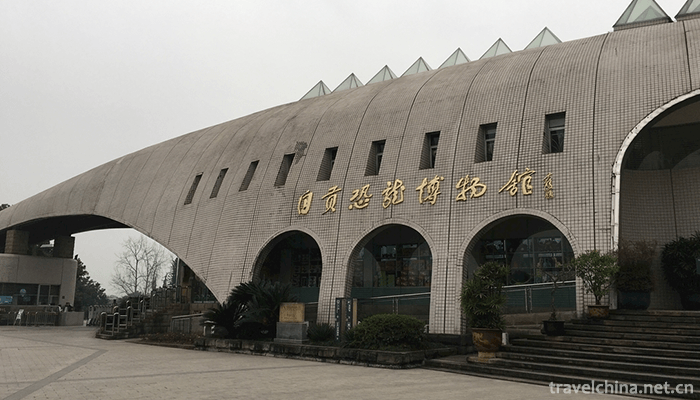

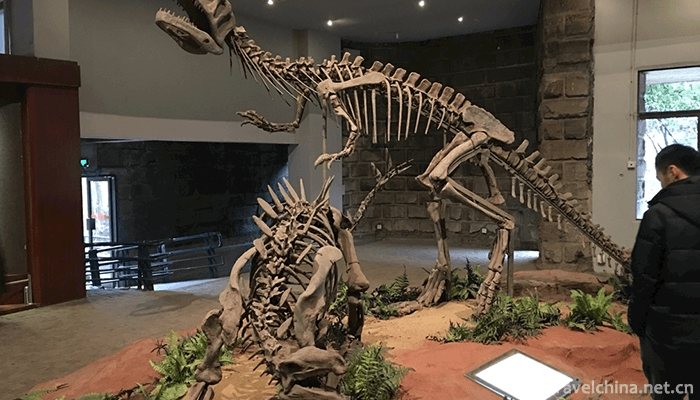

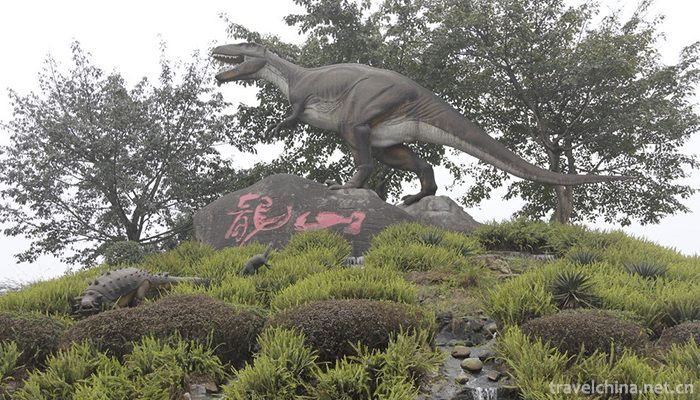
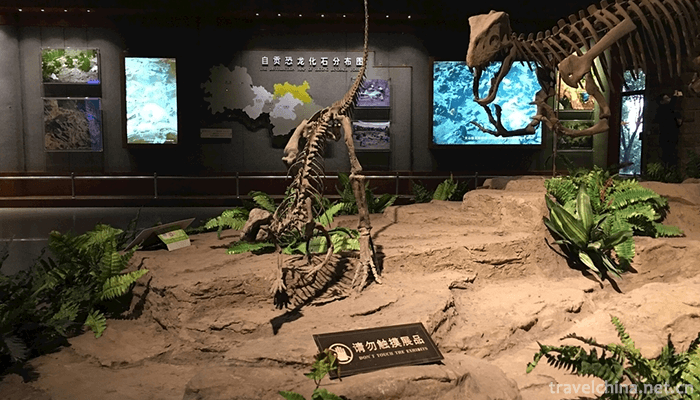
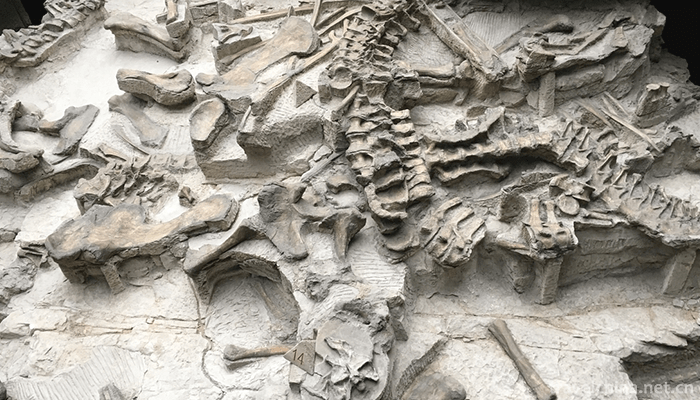
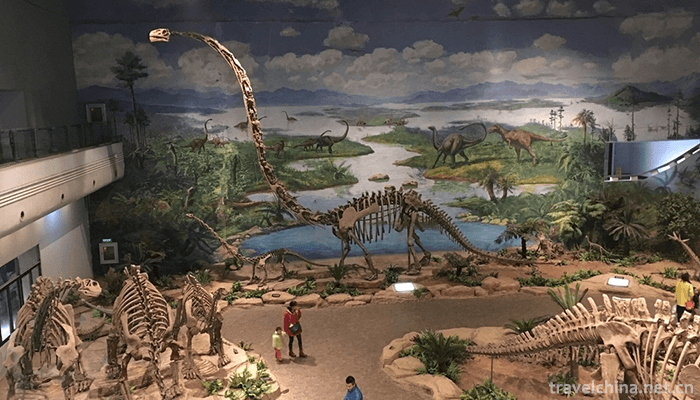
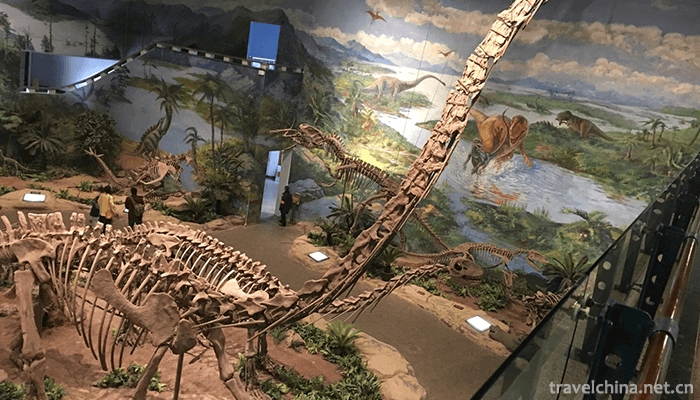



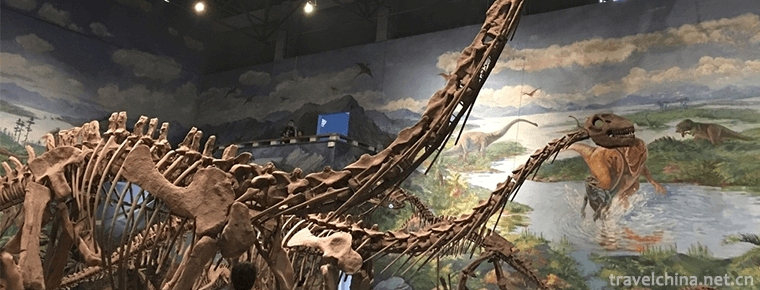
-
1.Dazhao Temple Scenic Area in Lhasa
Dazhao Temple, also known as "Zula Kang" and "Jue Kang" (Tibetan meaning for Buddhist temple), is located in the center of the old city of Lhasa. It is a Tibetan Buddhist temple bu
Time 2018-12-12 -
2.Three Gorges Household Scenic Area
Three Gorges Household Scenic Area, National AAAAA Class Tourist Area, the First Batch of Civilized Scenic Area in Hubei Province, Top Ten Scenic Spots in Hubei Province
Time 2018-12-12 -
3.Shanghai Zoo
Shanghai Zoo is located at 2381 Hongqiao Road, Changning District, Shanghai, which is close to Shanghai Hongqiao International Airport. Founded in 1954, originally known as the West Suburb Park. Shang
Time 2018-12-19 -
4.Cai Lifo quan
Cai Li Foquan is one of the Nanquan in Chinese traditional boxing. Legend has it that Chen Heng (1806-1875), a native of Jingmei Township, the new capital of Guangdong Province,
Time 2019-04-04 -
5.Torch Festival
Torch Festival is an ancient traditional festival of the Yi, Bai, Naxi, Jinuo and Lahu nationalities. It has profound folk cultural connotations and is known as the "carnival of the East".
Time 2019-05-05 -
6.Jingzhou Miao Geku
The Miao people's song (tgong) has been declared as the first batch of national folk intangible cultural heritage and one of the two "national treasures" of Huaihua City.
Time 2019-05-08 -
7.Poop love song
In February 2006, a cultural census unexpectedly found "Poya Ge Shu" in Poya Village. Through expert research, 81 patterns in "Poya Ge Shu" have the character of words, and are one
Time 2019-06-09 -
8.Shiwan Ceramic Sculpture Technology
Shiwan pottery sculpture has a long history. It first appeared in the Eastern Han Dynasty. It reached its peak in the Song Dynasty. After the founding of New China, the manufacturing level and artisti
Time 2019-06-15 -
9.Zhuang medicine thread moxibustion therapy
Zhuang medicine is the traditional medicine of the Zhuang people. It is a national traditional medicine based on the ancient Luoyue culture and Lingnan culture, with Yin and Yang as its foundation, Qi
Time 2019-08-16 -
10.Beijing Institute Of Petrochemical Technology
Beijing Petrochemical College was founded in 1978. It was developed from the Second Branch of Beijing Chemical College and Beijing Petrochemical College. It became more famous in 1992 and was transfer
Time 2019-09-06 -
11.Cuiyun corridor
Cuiyun corridor is a section of the ancient Shu Road, and also a section of Jianmen Shu Road, which is famous for its danger. Cuiyunlang, also known as "Huangbai" and "zhangfeibai" in ancient times, is located in Jiange County, Guangyuan City, Sichuan Province, and Zitong County, Mianyang City. Cuiyunlang in Jiange county has been built into a national AAAA scenic spot.
Time 2020-11-08 -
12.History of Dazhou
Dazhou area belonged to Liangzhou in Xia Dynasty and Yongzhou in Yin Dynasty. The earliest indigenous people were the Cong people, who established the state of Cong (now tuxi Town, Quxian county). In the early Warring States period, Ba people migrated fro
Time 2020-12-20